Eduard Camel #2: – Donald MacLaren
While there were many aces who flew the Camel, most of them - such as fellow Canadian aces Raymond Collishaw or William Barker - had flown other aircraft and scored with them earlier in their careers. The top-scoring Camel pilot of the First World War was a young Canadian, Donald MacLaren, who only ever flew the Camel in combat, making his score of 54 victories in a just less than eight months on the Western Front in 1918 an even more impressive feat.
Donald MacLaren was born in Ottawa on May 8, 1893, but spent most of his formative years on the Canadian frontier, as the family moved to the then-small town of Calgary, Alberta, when he was 6. As a youth, MacLaren’s father taught him to shoot, and he put it to good practice hunting game on the Alberta prairie and in the process giving himself an “eye” that would lead to his later career. At age 18, he moved with his family to Vancouver. Enrolling as an electrical engineering student at McGill University he had to leave school due to illness after two years. When he was recovered, he, his father, and brother Roy moved to Keg River Prairie, 200 miles north of the closest railroad and went into the fur trading business, where the young Donald MacLaren thrived. He joined a government exploration party which surveyed the 6th Meridian in the summer of 1916. On his return he found his brother had gone to enlist; he did the same in Vancouver, and was accepted into the Royal Flying Corps.
Following his graduation from flight training, MacLaren was assigned to 46 Squadron on the Western Front, flying the Sopwith Camel. His timing was fortunate, since there was not a lot of action at this point. With Russia now out of the war following the Bolshevik Revolution, the Germans were conserving their forces as they planned for what they expected would by the final offensive of the war in the coming Spring. Because of this, the young 2nd Lieutenant had the luxury of learning about combat flying from reconnaissance and ground strafing sorties before he finally entered an aerial combat on March 6, 1918.
On patrol between Arras and Cambrai with four other Camels, MacLaren’s flight leader spotted three Germans to the east. With the sun behind them, the Camels gained altitude without being spotted. MacLaren recognized the German aircraft as Hannover Cl.IIIs as he dove into the attack. Latching onto one that attempted to dive out of the fight, MacLaren followed the Hannover. Just as he lined up for his first shot, the German banked sharply. MacLaren followed, closing to 100 feet before opening fire. As he came around for a second pass, he found the Hannover spinning down out of control. He followed it till it crashed and exploded, to confirm the victory.
Within a matter of days, Operation Michael, the great German offensive of 1918 opened on the Western Front. With reinforcement from the German units that had been on the Eastern Front, the Germans sent 100 divisions against 60 Allied divisions and came within an ace of breaking through the Allied front in desperate fighting through March and April. Aerial activity also increased, and MacLaren scored his second victory on March 10 when he shot the tail off an Albatros D.V.
The Germans had brought forward several enormous railway artillery guns to support their offensive; one was shelling the British rear from a railway junction at St. Pol. On March 21, MacLaren and six other pilots from 46 Squadron made a low-level attack on this weapon, each dropping four 20-pound Cooper Bombs. MacLaren scored two direct hits on the mountings and tracks, and the gun was put out of action. Separated from the others, he spotted an LVG C.VI, which he attacked and shot down. While climbing away from this to avoid anti-aircraft fire, he nearly collided with a German observation balloon, which he turned and attacked. Setting it afire, he turned for home, when he spotted another LVG just behind the German lines at Graincourt. This German put up a good fight, scoring hits with both the nose gun and the observer’s machine gun, which ripped the wings of MacLaren’s Camel. He dove on the LVG and shot it out with the observer, killing him. The pilot nearly evaded further attacks, but was now so low he had to straighten out to head for safety. As he did so, MacLaren bored in again and shot the plane into the ground where it exploded. Now an ace, MacLaren received the Military Cross and promotion to 1st Lieutenant for this action.
From this point to the end of the war, combat was close to a daily experience. Jagdstaffel 1, led by Baron Manfred von Richtofen, had moved into the area where 46 Squadron operated, and the British pilots came up against numerous large German formations, which led to the British squadrons operating together. Soon air battles over the front could include over 100 airplanes in a single fight. By the end of March, MacLaren had shot down six more German aircraft, including a Junkers J.1 heavily armored ground attack plane.
On April 7th, MacLaren spotted an enemy two-seater and dove on it. When he pulled the trigger, the guns didn’t fire. Pulling off he discovered that both belts of bullets were broken. In the meantime, the German made no attempt to fire on him. When he approached, the observer stood up in his cockpit and pointed at his weapon, indicating it was jammed. With neither able to shoot the other, MacLaren waggled his wings and went home.
During heavy fighting through the month of May, MacLaren increased his score by 17, and two more balloons. During three fights, he scored multiple victories, clearly demonstrating he had “found his eye” as an aerial gunner. He then went through a “dry spot” for nearly the whole of the month of June, during which he only shot down two enemy aircraft, though his Squadron Leader commended him officially for his daring in leading attacks against the enemy even when outnumbered.
The month of June saw the superb Fokker D.VII - which had first appeared over the front the previous month - start showing up in larger numbers as Jagdgeschwader 1 was almost completely re-equipped with this outstanding fighter that outclassed anything the Allies had. For the rest of the war, MacLaren would be fighting enemies who had better equipment. In July, MacLaren shot down eight airplanes - including two new D.VIIs in one fight - and two balloons, bringing him out of his slump and leading to a second award of the Military Cross.
The defensive battle waged by the Allies since the beginning of the German offensive ended with containment of the Germans in July. On August 8, 1918 the great Allied counteroffensive that would lead to final victory began at Amiens, with the Canadian Corps in the lead. The German Jastas fought with fury born of desperation and confidence in the D.VII as they strove to protect the German troops in the trenches below. On the first day of the offensive, MacLaren was leading seven Camels on a patrol between Albert and Baupaume when he sighted a twenty German fighters in the misty morning. Leading the others into the clouds, he maneuvered into position to surprise four Fokkers. He dove on one and shot it down, when five more joined the two survivors out of the mist, and MacLaren’s Camel had its tail well-ventilated before he lost his pursuers in the clouds. He rejoined his flight just in time to be attacked by another 20 Fokkers. Recognizing a bad situation, the Camels dove for their lines and escaped.
Bad weather intervened for the next two weeks, but late August saw the weather improve and 46 Squadron went back to work as ground strafers, interdicting supply and troop columns moving to the front. This was dangerous work and several Camels were lost to ground fire. Despite the main mission being that of ground attack, MacLaren still found opportunity to score. Early on August 26 46 Squadron encountered a large formation of Fokker D.VIIs around Peronne. The Germans were above and the British, but had neglected to see the S.E.5a’s flying high escort to the Camels. As the S.E.5s dove on the Germans, 46 Squadron turned and trapped the enemy between the two British units. In the ensuing fight, five Fokkers went down, including one by MacLaren. The victory was made all the better by the fact that both British units returned without loss.
The last two full months of the First World War saw some of the most intense fighting of the entire war, as the Americans opened the Meuse-Argonne Offensive, and the British and French maintained their offensives against the Hindenburg Line. On September 15, 1918, flying alone, MacLaren saw a British observation balloon in flames west of Havrincourt Wood. He dove and found six Fokkers around it. Pulling the trigger he found he only had one working gun, but continued his attack and shot down one D.VII out of control. The other five then attacked him and he had all he could do to escape. The next day he led two other Camels on a patrol behind German lines. Spotting four Fokkers, MacLaren led the attack and forced the Germans to dive to escape. During fight all four D.VIIs were destroyed, with two falling to MacLaren. The attack brought his score to 37, and he was awarded the DFC.
A few days later, 46 lost their Squadron Leader to a collision with a new pilot in the squadron during a dogfight. MacLaren was given command of the squadron, nine months after having joined as a junior Lieutenant. On October 2, 1918, He led 15 Camels over the front in three flights of five, each at a different altitude. Over the German lines, eight D.VIIs attacked from out of the sun. MacLaren became in an intense dogfight with the leader, each exchanging bursts of machine gun fire. He used the Camel’s superb turning capability and got on the enemy’s tail, sending the Fokker down in flames. Just at this moment, 20 more D.VIIs dove into the fight. Attempting to get away, MacLaren turned into the pursuing enemy and shot down the leading aircraft just as the two high flights of Camels dove to the rescue.
A week later, MacLaren entered combat for what would prove to be the last time, when he shot down another LVG two-seater. The next day, while wrestling with a squadron mate, he managed to break his leg and was put out of action. MacLaren returned to England on November 6, 1918 and spent the Armistice in the Royal Flying Corps Hospital in London. His score of 48 aircraft and 6 balloons was only bettered by his countrymen, Raymond Collishaw and William Barker as regards Canadians fighting in the First World War. His final score of 54 left him tied as sixth-ranking Allied ace with the South African Allan Beauchamp-Proctor and Georges Guynemer. His victory score, accomplished in seven and a half months of the heaviest fighting of the war, during which he rose from junior Lieutenant to Major commanding the squadron, is outstanding.
After the war, Donald MacLaren was one of the founders of the Royal Canadian Air Force in 1920. In 1921 he started Pacific Airways Ltd. operating out of Vancouver. In 1926, he led the effort to reorganize the RCAF and take it out of further civil aviation development through the Aeronautics Act of 1927 and to organize private flying clubs throughout the country to provide trained pilots in the event of emergency. He merged his company with Western Canada Airways in 1928 and expanded operations into the Yukon and Arctic. In 1929, he and H. Hollick-Kenyon flew the first airmail service for WCA between Regina, Moose Jaw, Medicine Hat, Lethbridge and Calgary. MacLaren eventually became a senior executive in Trans-Canada Airlines and retired from that company in 1958. Having participated in the development of Canadian aviation from its earliest days, Donald MacLaren died in his sleep on July 4, 1989, at age 96.
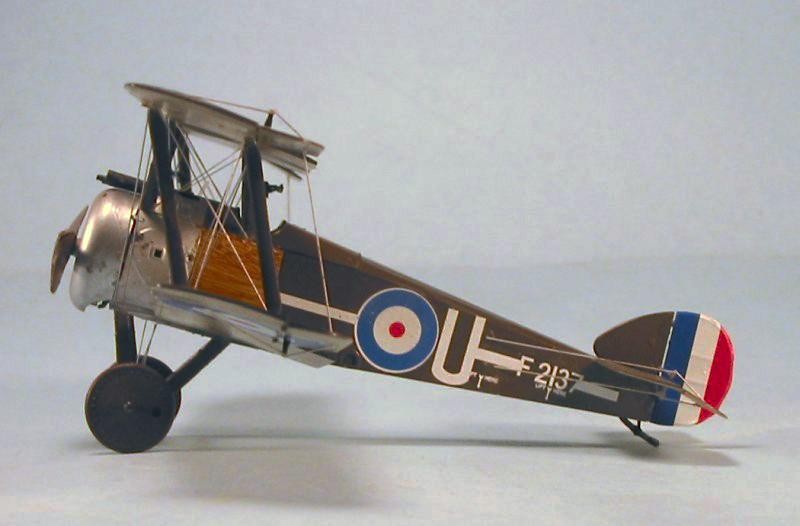
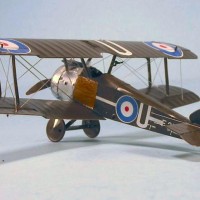
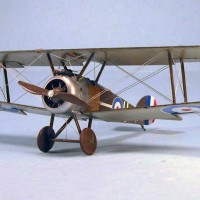
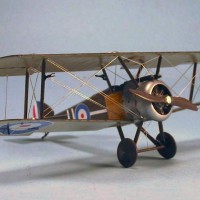
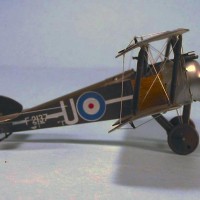
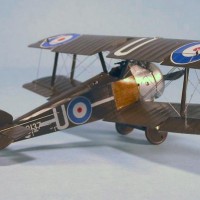
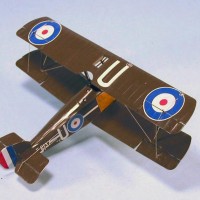
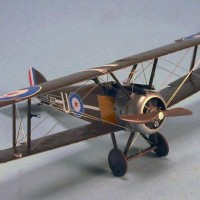
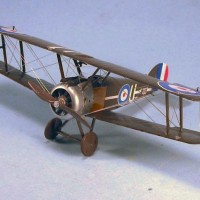
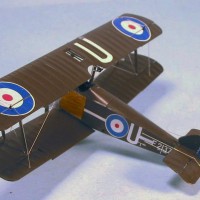
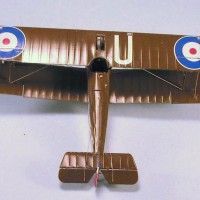
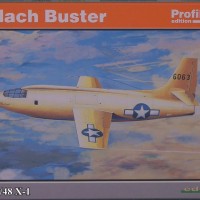
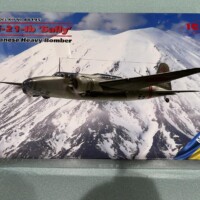
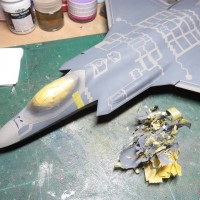
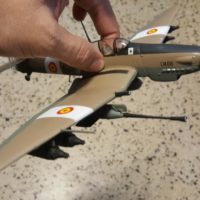
Nice build, Tom, and great write-up on McLaren. This post must have slipped through the net. Your rigging is admirable - it's what keeps me from building the WWI kits I've accumulated. I hope to at least have a go at a couple of Aurora reboxes before I kick off. Thanks for sharing this. I'll look for #1 hoping for more info on the kit itself.